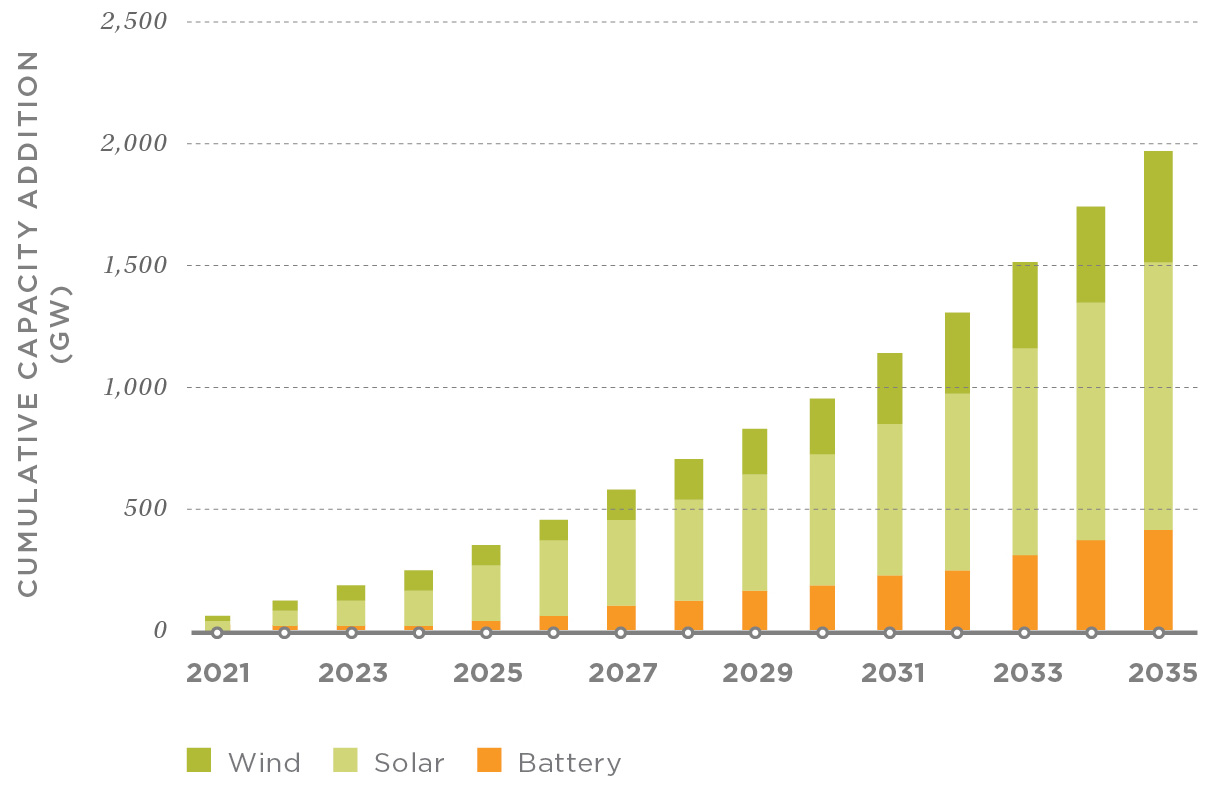Even with additional electric loads in the DRIVE Clean scenario, the 90% clean power grid is dependable without coal plants or new natural gas plants by 2035. The resulting wholesale electricity cost is lower than today’s costs. Under the DRIVE Clean scenario, all existing coal plants are retired by 2030, no new fossil fuel plants are built, and electricity demand growth from increased electrification averages about 2% per year. To meet this demand, the United States must install on average 105 GW of new wind and solar and 30 GW of new battery storage each year—nearly four times the current deployment rate. This ambitious target will require strong policy support, but it is not unprecedented internationally.
During normal periods of generation and demand, wind, solar, and batteries provide 72% of total annual generation, while hydropower and nuclear provide 16%. During periods of high demand and/or low renewable generation, existing natural gas plants (primarily combined-cycle plants) cost-effectively compensate for remaining mismatches between demand and renewables-plus-battery generation—accounting for about 10% of total annual electricity generation. The increased electrification and pervasive renewable energy and battery storage deployments require investments mainly in new transmission spurs connecting renewable generation to existing high-capacity transmission, rather than new investments in bulk transmission.




